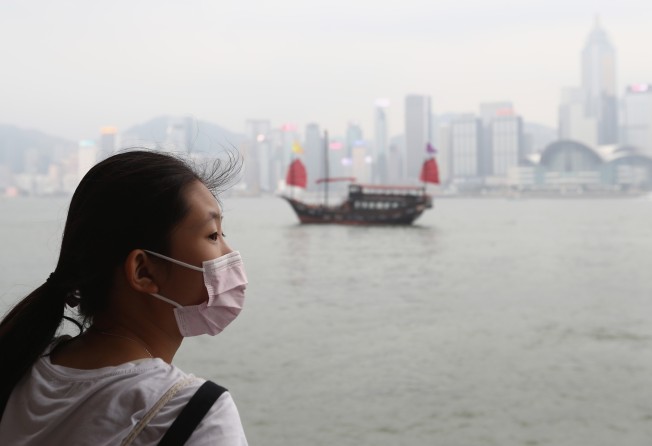Greenpeace blasts Hong Kong government over new air quality objectives, estimating 2,000 extra deaths each year from pollution
- Environmental group estimates the effects of air pollution if the city follows its new guidelines until 2025
- Veteran activists says city has ‘no timeline, no road map and no destination’ on air quality

An environmental group has said the government must further tighten its air quality benchmarks set to go into effect next year if it wants to prevent an estimated 2,000 deaths and HK$80 million in health care costs each year.
Greenpeace, the global environmental NGO, issued the warning on Monday, citing a study that predicted the effects caused by the projected air pollution level in 2025 if the city’s polluters only follow the World Health Organisation’s interim targets, rather than its strictest standards.
Among the Greenpeace projections were about 2,000 deaths, 1,300 or more visits to emergency wards and at least 264,000 more cases of respiratory disease each year. The cost to the public health sector was estimated at HK$80 million (US$10.1 million) per year.
Greenpeace said the health and economic impacts estimates were “conservative”. The group said its study was based on officials figures on the emission level of fine suspended particulates (PM2.5) in 2015, and its projected emission level in 2025. It said the corresponding health risks were in line with government models.
“The government needs to take tackling air pollution more seriously. It is the number one threat to health globally,” said Frances Yeung, a senior campaigner for Greenpeace.
She cited a Hong Kong University study that found more than 10,000 Hongkongers had died prematurely because of the city’s air pollution in the last five years.
“The government has no timeline, no road map and no destination when it comes to achieving the WHO’s strictest guideline, that’s most worrying of all,” Yeung said.
The Environmental Protection Department reviewed the city’s air quality objectives in December as required by law for every 5 years. The department tightened the maximum emission level for fine suspended particulates (PM2.5) – from the current annual average of 35 micrograms per cubic metre of air – to 25mcg. The 24-hour average is to be tightened from 75mcg to 50mcg.
Yeung called the new air quality goals “nothing more than sticking plaster on an enormous problem”. She pointed out that the targets fall well short of the WHO’s strictest standard of 10mcg each year and 25mcg in 24 hours.
The number of times the 24-hour average target was allowed to be breached in a year was also raised drastically, from nine to 35.
The government is shifting the goalpost, which renders the targets meaningless.
“The government is shifting the goalpost, which renders the targets meaningless,” said the veteran activist.
PM 2.5 are particles of solid and liquid matter that can remain suspended in the air. They are among the most harmful pollutants because they penetrate far into the lungs and easily enter the bloodstream.
Aside from cancer, particulates such as these can cause bronchitis and other lung conditions, aggravate asthma, and are linked to birth defects and heart disease.
Objectives for sulphur dioxide (SO2) emissions were tightened from 125mcg over a 24-hour average to 50mcg. The new figures for both PM2.5 and SO2 comply with a second set of three interim WHO targets.
No tweaks will be made to other pollutants such as ozone and respirable suspended particulates (PM10).
Greenpeace urged the government to adopt more green measures, such as promoting the use of electric vehicles for public transport. The group also called for the use of onshore power supplies for cruise ships, which it says could help reduce pollution.
“Achieving the WHO’s standard will definitely generate some benefits. But how easily that could be brought about and at what cost – are a totally different story,” said Alexis Lau Kai-hon, a professor of environmental engineering at the University of Science and Technology.
A spokesman for the Environment Bureau said: “The WHO states its recommended three tiers can be applied in accordance with local circumstances, and the government will keep its targets under review with reference to overseas and local development.”